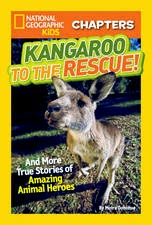Since it's the end of Earth Week (Earth Day was Wednesday), I thought I'd feature a new series of nonfiction for emergent readers. The new series focuses on pollination, and is a "First Step Nonfiction" series published by Lerner just this year. The author is Jennifer Boothroyd, and two additional titles include "Self Pollination" and "Parts of a Flower".
theme: nonfiction, insects, animals, plants
opening (from
Insect Pollinators): "This bee is busy. It is gathering food."
The books in this series show the connections between plants and animals as they depend on each other for survival. Insects and animals need the pollen and nectar from plants, and the plants depend on the animals to move pollen from one plant to another.
What I like: The photography is awesome. The text is just right for kids beginning to read, and text boxes include simple explanations. For example: on one page the main text says that an insect crawls on a flower and pollen sticks to the insect. The photo shows a monarch butterfly on a milkweed flower, but we can't see the pollen. So in a text box we read this: "Pollen often sticks to an insect's back, legs, or head."
Lest you think bees and butterflies are the only insects pollinating flowers, there are pages showing beetles, moths, and even a fly. Animal pollinators show bats, birds, and even lizards moving pollen.
These books are short - 24 pages - and small enough to tuck inside a folder or pocket of a kid's backpack. The close-up photos are bright and colorful, sure to engage a kid's attention and imagination. And there's even one section that shows humans pollinating plants - something an adventurous kid might try. (hint: it's not as hard as you might think)
Beyond the book: Pollinators are important. Without them we wouldn't have apples, pears, pumpkin pie, chocolate, blueberries... And Earth Week is a good time to think about them, because we can help pollinators out by making sure they have habitat and water and nectar sources. So, how can we do all this?
Follow a pollinator. Next
time you're outside and you see a butterfly or bumblebee, follow it
around to see what flowers it lands on. How far does it have to fly to
find flowers? Go on a walk through your neighborhood. Are there certain
areas where there are a lot of bees and butterflies? Why do you suppose
the pollinators hang out there?
Make your yard pollinator friendly. You can do that by joining the
Great Pollinator Habitat Challenge (while you're there, check out the rest of the site)
What would your shopping cart look like without pollinators? A food market decided to take all the insect-pollinated foods off their produce shelves to see what it would look like. They ended up taking 52% of the produce off the shelves! You can see their before and after photos
here. Go on a field trip to your local grocery store and see what you normally buy that is dependent on insects for pollination. How would it change the way you eat if those foods weren't available?
Today's review is part of the STEM Friday roundup. Drop by
STEM Friday blog for more science books and
resources. We're also joining
PPBF (perfect picture book Friday), an event in which bloggers share great
picture books at Susanna Leonard Hill's site. She keeps an ever-growing list of
Perfect Picture Books. Review copy from the publisher.




.jpg)









